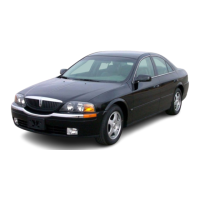
Do you have a question about the Lincoln 2001 LS and is the answer not in the manual?
| Brand | Lincoln |
|---|---|
| Model | 2001 LS |
| Category | Automobile |
| Language | English |
Describes symbols used in the manual for vehicle information and safety alerts.
Provides information to reduce the risk of personal injury and prevent damage to the vehicle.
Explains various warning lights and chimes on the instrument cluster and their meanings.
Details the function and interpretation of different gauges on the instrument panel.
Explains how to operate the vehicle's headlamp system and related functions like DRL.
Describes the operation of the Dual Automatic Temperature Control (DATC) system for cabin comfort.
Covers the operation of the vehicle's audio system, including radio, tape, and CD functions.
Details the functions of controls mounted on the steering wheel for audio and other features.
Explains how to use and operate the vehicle's speed control (cruise control) system.
Provides instructions for programming and using the HomeLink system for garage door openers.
Explains the vehicle's passive anti-theft system and key operation for security.
Explains how to adjust head restraints for proper positioning and safety in collisions.
Details the operation of power seat adjustments, including seatback and cushion positioning.
Covers essential precautions and guidelines for using vehicle safety restraints correctly.
Describes the proper use and features of the vehicle's lap and shoulder belt systems.
Explains the function of the safety belt pretensioner system and its interaction with the SRS.
Outlines essential steps and precautions before starting the vehicle's engine.
Provides detailed instructions for starting the vehicle's engine under various conditions.
Offers critical safety advice regarding the dangers of exhaust fumes and proper ventilation.
Discusses normal brake operation, noise, and the anti-lock braking system (ABS).
Explains the functionality of the ABS, including its warning light and operational characteristics.
Describes the Traction Control system's function in maintaining stability and preventing wheel spin.
Details the AdvanceTrac system for enhanced vehicle stability and handling.
Covers the operation of the automatic transmission, including shift modes and interlocks.
Explains the operation of the manual transmission, clutch, and shift speeds.
Provides guidelines and recommendations for safely towing a trailer with the vehicle.
Outlines the complimentary roadside assistance program offered by Ford and its coverage.
Provides step-by-step instructions for changing a flat tire, including safety precautions.
Details the procedure for safely jump-starting a vehicle's dead battery.
Illustrates and explains the correct method for connecting jumper cables between vehicles.
Offers general recommendations for vehicle servicing and the use of Motorcraft parts.
Lists essential safety precautions to follow when performing maintenance on the vehicle.
Explains the procedure for safely opening the vehicle's hood.
Shows and lists the locations of key components in the engine compartment.
Covers checking and adding engine oil, including recommendations for oil type and viscosity.
Details how to check and add brake fluid, including important safety warnings.
Covers checking and adding engine coolant, including correct mixture and safety precautions.
Explains the fail-safe cooling system and what to do if the engine overheats.
Covers important safety precautions and information regarding automotive fuels.
Offers tips and techniques to improve the vehicle's fuel economy.
Explains the vehicle's emission control system and its maintenance requirements.
Explains the requirements for the vehicle's onboard diagnostics system for I/M testing.
Lists the vehicle's exterior bulbs and advises on checking their operation.
Provides detailed steps for replacing headlamp bulbs, including safety notes.
Guides the user on how to aim the vehicle's headlamps correctly.
Lists Motorcraft part numbers for various vehicle components.
Provides a table of refill capacities for different vehicle fluids.
Details lubricant specifications, including Ford part names and Ford specifications.
Presents key engine data, such as displacement, octane rating, and spark plug gap.
Shows the vehicle's exterior dimensions with a diagram.
Explains how to locate the vehicle's certification label and VIN.
Describes the Ford Extended Service Plan coverage and how to purchase it.
Provides information on obtaining warranty repairs and service for the vehicle.
Explains the function and process of the U.S. Dispute Settlement Board for warranty claims.
Details the CAMVAP program in Canada for resolving vehicle service disputes.
Lists Ford-approved car care products available for cleaning and protecting the vehicle.
Highlights the availability and benefits of genuine Ford accessories for the vehicle.
Instructs users on how to report safety defects to NHTSA and Ford Motor Company.
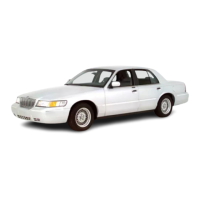
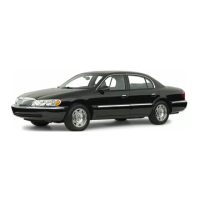

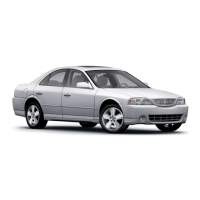
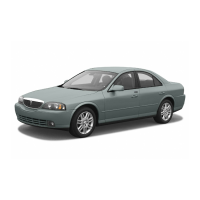
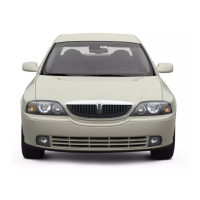

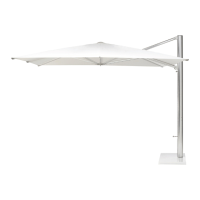



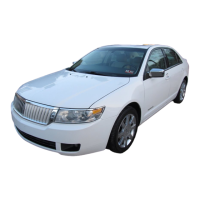
